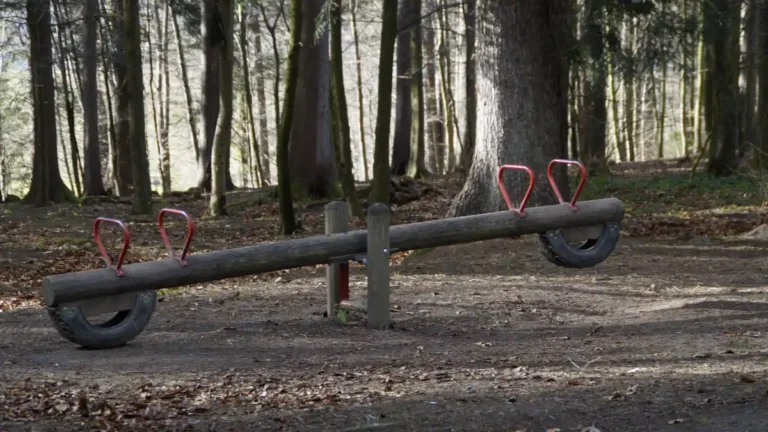Why scholars labor so feverishly to build monuments of narrative that collapse under the first gust of reality
When I staggered back to Austria in 2004, after fifteen years abroad, I discovered that my country had been pickled and stored in formaldehyde. The Austria I remembered was gone, embalmed in memory. I no longer knew who was important, what was fashionable, or which names were supposed to be whispered with reverence in Viennese coffee houses. The faces and voices of my youth had obligingly died or faded, replaced by an entire cast of strangers, suddenly lionized as if they’d been marble statues standing guard over the Republic since Caesar’s time.
So be it. Time has a way of laundering mediocrities into monuments.
For one brief lapse of sanity, I entertained the notion of acquiring a PhD, as one might purchase an antique chandelier—not because it was needed, but because it would look splendid hanging in the grand hall of Austrian respectability. My credentials from France were more than adequate, but I could hear the whisper in my head: “If you want to dine with the Viennese priesthood of intellect, you’d better wear their vestments.”
And so I inscribed myself at the University of Vienna, prepared to undergo the rituals that would grant me entry. My examiner in constitutional law was none other than Professor Heinz Mayer—the nation’s darling jurist, a fixture on television debates, Austria’s supreme oracle of legality.
I admired him. He had that intoxicating mix of calm poise and radiant intellect, the kind of bearing that makes lesser mortals think they are basking in the light of Truth.
But life, that professional vandal, had other plans. My career outside academia flourished. Austria’s largest company hired me as a contract expert. Work devoured ambition, family devoured time. The PhD was shelved like an unfinished novel.
Then came COVID, and Austria revealed its true genius: it became the only Western democracy to legislate medical experimentation by force, demanding needles for all citizens of a certain age, as if they were cattle to be branded. I rebelled. I prepared to uproot my family. In the end, the law was repealed, not from moral awakening, but because the people mutinied.
And there was Mayer again, my old examiner, Austria’s constitutional conscience. Only now, instead of defending rights, he rationalized their erasure. On live television, with a straight face, he justified the mandatory violation of bodily autonomy. He conjured absurdities as if human beings were bureaucratic paperwork to be stamped and filed.
I was stunned. The man I had once admired revealed himself as a high priest of nonsense, a theologian of cowardice. Had he ever possessed a spine, or had I mistaken polish for principle all along?
That betrayal cracked something open. How could a man drenched in law and reason trample both with such enthusiasm? The answer lay not in Mayer, but in the guild he represented. It was a window into the soul of academia itself—a profession less devoted to truth than to liturgy, less to inquiry than to narrative.
From Innocence to Indoctrination
Children arrive in this world as radiant anarchists: curious, unspoiled, unshackled. They want to touch, taste, disassemble, discover. In a sane world, curiosity would suffice. But ours is not sane. Ours is a clockwork prison.
Enter “education”—the respectable euphemism for domestication.
The Prussians, bless their goose-stepping hearts, invented compulsory schooling not to nurture thinkers but to manufacture obedience. They needed clerks who could file without revolt, soldiers who could march without hesitation, and factory drones who could read an instruction manual without demanding metaphysics. Schools were designed not to cultivate brilliance but to crush eccentricity into manageable pellets.
And so we went: sit down, shut up, obey the bell. The clock ruled all. The Prussian drill sergeant echoed in every classroom bell that still clangs today. The miracle is not that children resisted—it’s that so many begged to conform, desperate to crawl into the mold. Those who didn’t were labeled failures, and society made sure the label stuck like a scarlet letter.
By fourteen, the deed is done. The raw child has been hammered into a “standardized unit,” ready for deployment in the social machine.
The Crawl Pit of Higher Learning
But the real witchcraft comes later. Gymnasium, university, postgraduate studies—the crawl pit where curiosity is gutted and orthodoxy installed.
Each discipline cultivates its catechism. Physics has its idols. Philosophy its sacred cows. Economics its revealed scriptures. The higher you climb, the more survival requires mimicry. Publish or perish. Cite the anointed. Parrot the liturgy. To question is to immolate your career.
The system weaponizes ambition. You’ve invested years, treasure, reputation. To dissent now is to admit you’ve wasted your life. So you kneel. You echo the mantras. Not from belief, but from necessity.
This is not confined to the soft-headed humanities. STEM parrots the climate apocalypse with the same fervor the humanities parrot gender liturgy. The vestments differ; the priesthood remains.
History screams its warnings. Soviet biology crucified itself at the altar of Lysenko, party loyalty enthroned over evidence. Western economics justified years of austerity on a spreadsheet error, until some unwashed heretic finally opened the Excel file.
The lesson is eternal: once narrative colonizes the academy, truth packs its bags. Evidence bends. Dissenters burn.
The Priesthood of Academia
Professors no longer wear cassocks, but their function is identical. They are secular clergy, interpreting sacred texts, enforcing orthodoxy, excommunicating heretics.
Galileo once faced the Inquisition for suggesting the Earth was not the universe’s divinely appointed pivot. Today, climate skeptics and gender dissidents face the academic Inquisition for suggesting perhaps—just perhaps—the holy models are flawed. The robes are gone, replaced with tweed, but the machinery is unchanged.
Academics wield their authority like a flaming censer. Their pronouncements are not opinions; they are gospels. To question them is not error—it is sin.
Sowell was right: “There are no solutions, only trade-offs.” But academics sell salvation, and like any priesthood, their errors damn others while leaving themselves unsinged.
Money and Narrative
Strip away the vestments, and the god of academia is not Truth but Cash.
In America, $1.7 trillion of student debt hangs like a millstone. Survival requires tenure. Tenure requires obedience. Good luck sniffing a post if you’re known for original thought.
In Europe, the leash is velvet, but the pull is the same. EU grants, national councils, foundations—all shower gold on projects that whisper the liturgies of “climate,” “diversity,” “sustainability.” Projects that whisper “independent thought” are starved into extinction.
Like priests dependent on tithes, academics will bless whatever doctrine the paymasters demand.
The Addiction to Narrative
You might think retirement breaks the spell. Surely, after decades of servitude, the shackles fall away and the old professor can laugh at his former obedience.
But no. Most simply crawl into a new narrative. Having forgotten how to think, they continue to believe. The blue pill is swapped for a red one, then a green, then a rainbow-striped one—but it is always a pill. Always another narrative.
The Matrix was right. Very few take the red pill. Even fewer learn to live without pills altogether.
The Heretics
And yet, cracks remain.
Richard Feynman embarrassed NASA’s bureaucrats with a child’s trick—an O-ring dunked in ice water—proving that reality is sometimes more obvious than committees will admit.
History remembers other heretics: Diogenes plucking a chicken to ridicule Plato’s “featherless biped.” Giordano Bruno roasted alive for daring to imagine an infinite cosmos. Galileo confined for his heliocentric insolence.
Today, heretics linger—ostracized, ignored, erased from citations. They are treated as lepers. But their very existence proves that total conformity is impossible.
The Collapse of the Pedestal
After Mayer’s betrayal, I looked at my own circle. People I’d known for decades, with dazzling records, parroted positions so absurd you wondered how they managed to butter bread without amputating a finger.
These were not debt-ridden postdocs or tenure-chasing sycophants. Many were financially secure, some retired. And yet, the narrative owned them. Their minds had been laundered so thoroughly that even free of the machine, they could not stop spinning.
That’s when it struck me: narratives never die. They merely molt. Once you are conditioned to live inside one, you will crawl into another rather than face the terrifying silence of unmediated reality.
Conclusion: Clear Eyes
Why are academics so beholden to narratives? Because the system manufactures orthodoxy with industrial precision. Because survival, status, and self-image demand compliance. Because funding flows to obedience and starves dissent. Because narrative addiction, once learned, is harder to quit than heroin.
Not all are lost. A few still resist. They are mocked, ruined, erased—but they keep alive the possibility of sanity.
When Mayer collapsed from oracle to apologist, I realized it was never about him. It was about the species. About us. The cage of narrative is universal. Academics simply confuse their cage with a cathedral.
Better, then, to be an honest idiot with clear eyes than a credentialed genius polishing the altar of nonsense.





Thanks Marcus. Made entertaining reading.
Why do we mislead. Why is it that the truth is never spoken but somehow is always there. Churchill had a quote that tried to understand this strange phenomenon.
Churchill; – “The truth is such a precious thing we must build an elaborate tapestry of lies to protect it.”
Forster’s novel, A Passage to India is actually a well disguised discussion of these issues. There is a great review of the book by Peter Burra that summarizes these ideas. Some quotes from the review are copied below.
“Paradoxically, the more actually ‘like’ life a work of art is, the more nonsensical it appears to them (most people).”
“As the rev. Arthur Beebe remarks; ‘It is so difficult – at least, I find it difficult – to understand people who speak the truth.’”
My own contribution would be that we lie because we value the truth.
If the only way to prove allegiance is to give up something valuable, then why not make the truth that sacrifice. Giving it up doesn’t generally cost us too much and we are proving our allegiance by giving up something important and valuable.
Allegiances, of course, are vital to our evolution. We would be a lot worse off as species etc. if we didn’t lie.
Your professor is just, possibly subconsciously, living by these timeless complex survival techniques. He tells a series of elaborate lies to find out who is truly an acolyte. The students pretend to believe and the institution survives, probably because it is valuable in some way.
There are two things that humans value above all others. They are truth and human life. We sacrifice truth sometimes and in different circumstances we may sacrifice human life, sometimes our own, as a proof of our allegiance to a grouping or cause. Truth is generally a little less costly and more efficient, that’s all.
That’s a fascinating take — lying as a kind of reverence, a ritual sacrifice to the sanctity of truth. I don’t disagree in principle. But in practice, I suspect most people aren’t engaging in anything quite so elevated.
For the average participant, it’s not about preserving truth beneath a tapestry of lies; it’s about not getting eaten by the tribe. Fitting in is an ancient reflex, older than language, older even than moral reflection. It’s less a conscious choice than a pulse of self-preservation that hums somewhere below the cortex.
Reverence, after all, requires thought — and thought is in remarkably short supply. Most people simply react to stimuli, perform the expected gestures, and retreat as quickly as possible to their preferred distractions. Exceptions do exist, of course — but as the word suggests, they are rare enough to prove the rule.
Thanks for the reply. I reread your essay with pleasure.
Your attack on the latest academic narrative is brutal and will I hope help to sink it eventually. I agree with you that we are generally tribal but would add that all tribes have a narrative that bonds them. These narratives all have untruths at their core; lie is too strong a word. Sometimes these untruths are outrageous as we see with climate activism and religion, and at other times no more than a clothing fashion or way of speaking. All have one thing in common; we need to believe to prove our fealty.
I may be wrong, but I feel you and I each have a different approach to these narratives. I see them as a vital part of the evolutionary process while you tend to ridicule them for their untruths. Wasteful narratives have to be sidelined, so it is important that people such as yourself speed up that process. While I have felt strongly about various issues and done my best to confine them to the dustbin of history, I generally try to work out how these narratives have a useful purpose in the great scheme of things.
There are two general postulates that I hold to be true.
The first is; God does not play dice. (I’m not religious by the way so the use of the word “God” here is a bit confusing.) No human behavior of any sort – including criminal, subservient, dominating, sociable, basically anything you can think of – can possibly exist unless it has some useful purpose in the scheme of things. It simply would not have evolved otherwise.
The second is; If we could magically make all humans the same intelligence and personality and place them on planet earth, then within a short space of time, certainly within a generation, we would have the same situation as we have now. We would develop various roles for ourselves, all tested and adjusted by prejudice, because roles are a more efficient way to do things.
We as a species cannot survive without the irrational clash of dishonest opposites. Our prejudices would develop as now, and wars would be fought. The “Lord of the Flies” was written with this theme in mind.
All this chaos, driven by the clash of untrue narratives.
I appreciate your observation that untruths and shared narratives are, perhaps, the necessary glue that prevents the social fabric from tearing at the seams. It takes a certain amount of willing cogs to maintain the system’s momentum and prevent an outright societal collapse. I do not fundamentally disagree with this structural necessity.
However, there are those of us who, by nature or by choice, must opt out. We are the fringe dwellers, a minority of minorities. We exist in the shadows, not as revolutionaries, but as observers. Our role is not to dismantle the machine, but to provide critical perspective—to be the unwelcome mirror reflecting its deep flaws and absurdities.
We embrace the world with all its imperfections. We will continue to ridicule and scorn the dishonest narratives and the system that perpetuates them. Yet, this scorn is not a prelude to insurrection; it is merely an acknowledgment of truth. We understand the Sisyphean futility of trying to fundamentally change a system that, as you rightly point out, is likely an inevitable product of human evolution.
Moreover, who are we to deny others the right to belong? If individuals willingly choose the comfort and security of being a cog within the mechanism, it is not our place to strip them of that freedom. To force a change upon the compliant majority would be its own form of tyranny.
We are not revolutionaries. We are simply the people who find a unique and often dark beauty in the shadows—content to highlight the imperfections, but resigned to their permanence. Our freedom lies in our perspective, not in our power to alter the world.
Thanks for an interesting discussion.
I see a clash or equilibrium between teamwork or tribal behavior and on the other hand individualistic behavior as pivotal to the survival of our species. That equilibrium is constantly being tested as is seen clearly in our politics. Importantly there is no right or wrong position, just a contested equilibrium, controlled essentially by untrue narratives.
Forster wrote “A Passage to India” early last century and it was cleverly reviewed by Peter Burra at the time. Forster wrote of the great pleasure he got from the review as it completely understood what he was trying to say. A very rare thing.
As I mentioned above, the book and review discussed the same issues of truth and human behavior etc. as we have been. Their take on life is not necessarily mine but is pretty close or close enough to be interesting to me.
I summarized Burra’s review recently for my sister Kate and I thought you might be interested. The quotes are from the Burra review.
“From here on I’ll refer to Forster and Burra as the one person, (FB). Their approach is similar as far as I can see and well explained by Burra.
Firstly, while the use of things like symbols, rhythm and leit motif are very effective in making the novel interesting and readable, and certainly worked in this case, they are not FB’s main point and are not that important to my understanding of the book.
Forster has another agenda other than showing us his skills as a novelist.
FB Page 7; – “Mr. Forster, we said, was a musician who chose the novel because he had ideas to utter which needed a more distinct articulation than music could make. He is interested passionately in human beings; not only in the idea of them – which is presumably what most novelists mean when they lay claim to that passion – but in their actual living selves.”
It is his ideas about the human condition that rang a bell with me and I wasn’t sure whether everybody or, alternatively, very few would identify with those ideas.
All the quotes below make perfect sense to me but may possibly be dismissed by other people with a different approach. Who knows.
Churchill; – “The truth is such a precious thing we must build an elaborate tapestry of lies to protect it.”
FB Page 2; – “Paradoxically, the more actually ‘like’ life a work of art is, the more nonsensical it appears to them (most people).”
FB Page 9; – “As the rev. Arthur Beebe remarks; ‘It is so difficult – at least, I find it difficult – to understand people who speak the truth.’”
FB make the point that the truth is boring and uninteresting. The way I see it is that the truth is not only uninteresting to most people, it is also dangerous. The truth is that there is no significant fundamental difference between people. Small inconsequential differences between people are exaggerated out of all proportion when looked at through a social prism. The characters in the book who approach people of different cultures with an open face, Miss Quested, Dr Aziz particularly and Mr. Fielding to some extent, all end up socially isolated and unhappy in some way.
FB see the “clash of opposites” as fundamental to the human condition. That clash of opposites depends on culture, fashion, personality, deception, prejudice, propaganda etc. Importantly it is not based on truth but is necessary to drive humanities heat engine, otherwise we would still be “protoplasm”. He then makes the point that these opposites and their clash are part of the same whole.
FB Page 10; – “Mr. Forster brings in these characters to make a clash of opposites, but not only the clash; he describes the merge as well. He realizes that, having regard to their common humanity, no two types, however much opposed, can be considered as absolutely distinct. Hence his point of view is constantly shifting – each side is alternately presented for sympathy, first impressions are contradicted, confirmed, contradicted again, so that a close attention and memory are required to add up the final sum.”
FB Page 11; – Helen withdraws further into the ‘personal life’, but for Margaret the ‘outer life’ gradually becomes a ‘real force’, something that she could not attain to. She sees that it represents a spirit without which ‘life might never have moved out of protoplasm’.3
FB see Helen’s ‘personal life’ and Margaret’s ‘outer life’ as two parts of a whole, one comfortable and the other necessary and vibrant. FB then ridicule (“It is amusing …“) Lawrence and Blake for their prejudice in taking one side only in the footnote.
FB Page 11; – “3. It is amusing to find Lawrence writing to Forster (Letters,p. 552); ‘you did make a nearly deadly mistake glorifying those business people in Howards End, business is no good.’ It is like Blake’s rejection of Wordsworth as a materialist, when he says: ‘There is no such thing as natural piety because the natural man is at enmity to God.’”
FB then boil this all down to the difficulty any individual must have in achieving intimacy with any other.
FB Page 8; – “Once again, therefore, the author’s interest is in the clash of human beings, the struggle which any one individual must endure if he is to achieve intimacy with any one other. The fundamental personal difference is again deliberately heightened by an external circumstance – the difference of race.”
Kate (my sister), my comment about “goodies and baddies” is exemplified by the quotes from Lawrence and Blake in the footnote on Page 11. Burra deliberately ridicules their prejudiced approach. I was wondering if most people see the world as FB do or see people more as goodies or baddies. I suspect FB would win the day with most people, but I have no idea really.
There are other elements of the FB philosophy that didn’t interest me much; the hating war but loving soldiers stuff and sculptured Stephen etc.
Anyway, that is my understanding of Burra’s great review and is summarized by this final quote.
FB Page 3; – “’it’s no more than that really, and a perfectly adjusted organism would be silent’.
The most profound phrase there is the last one, and it bears on an important aspect of Mr. Forster’s philosophy,”
This is a little bit out of context and certainly doesn’t do the Burra review justice but should give some idea of the thoughts of these two gentlemen. I can return email a copy of the full review if you would like to read it.
I don’t actually see our points as oppositional. If anything, they seem to orbit the same truth from different angles. The psychological and sociological dimensions you highlight are fascinating — and I’ll admit, I agree with much of what you’ve laid out, albeit cautiously.
That said, I tend to view human society less as a moral battleground and more as a cyclical mechanism — a kind of seesaw where the energy of one phase inevitably loads the next. Decay isn’t an aberration in that pattern; it’s part of the balancing act. Where I suspect we meet is in acknowledging that these swings are unavoidable.
But for the few who still insist on thinking — my readers included — it does matter to recognize the rot when it appears. Not to fix it (that would be delusional), but to reorient one’s personal stance toward life. Understanding the machinery — its limits, its inevitabilities — spares a person a great deal of futile disappointment. And in that sense, yes, the mental labor pays off.
I find your references to Forster and Burra genuinely stimulating, and I’ll be digging further into them. They might well help refine how I articulate this pattern in future work.